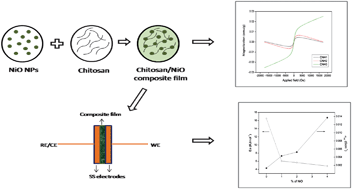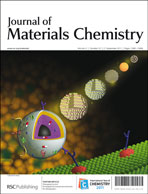Chitosan/NiO nanocomposites: a potential new dielectric material†
Abstract
The study of electrochemical behavior of organic–inorganic nanocomposite materials remains a major challenge for application in energy storage devices. Here, new composite materials of


 Please wait while we load your content...
Please wait while we load your content...